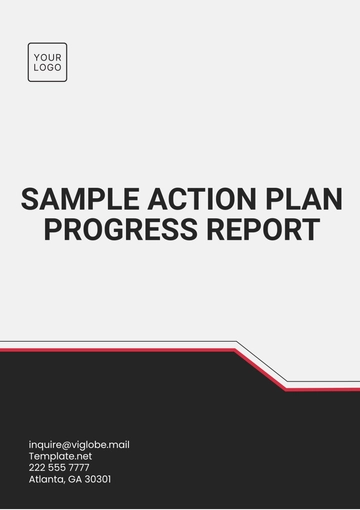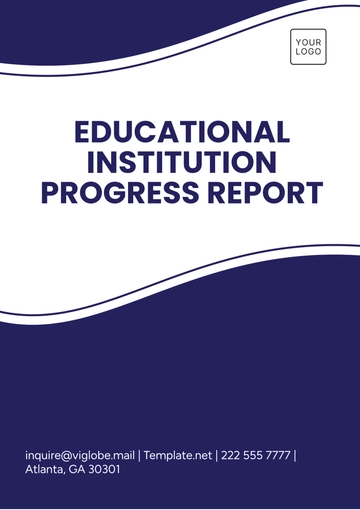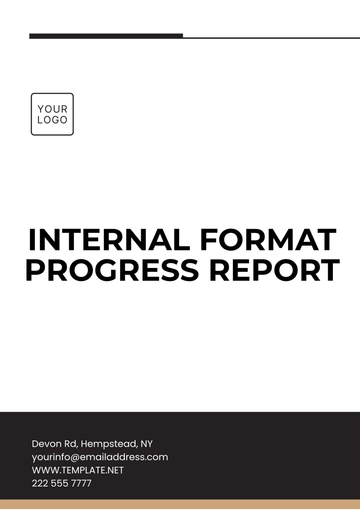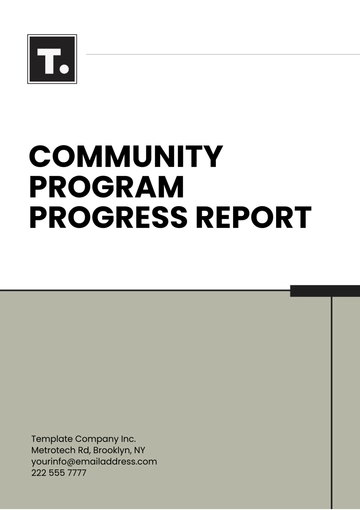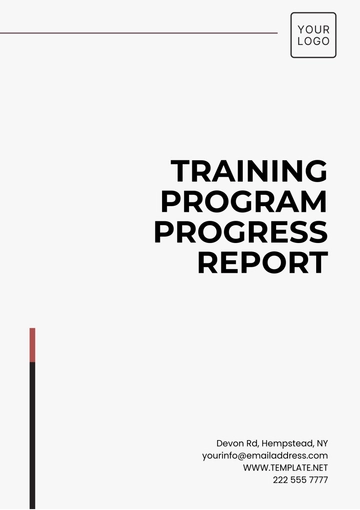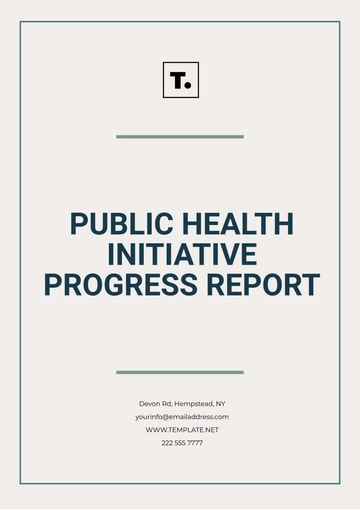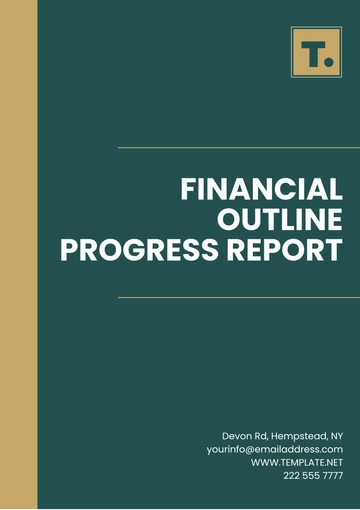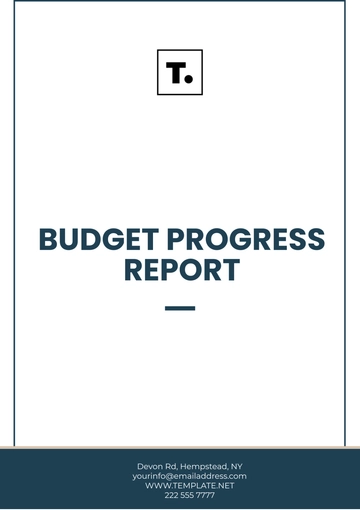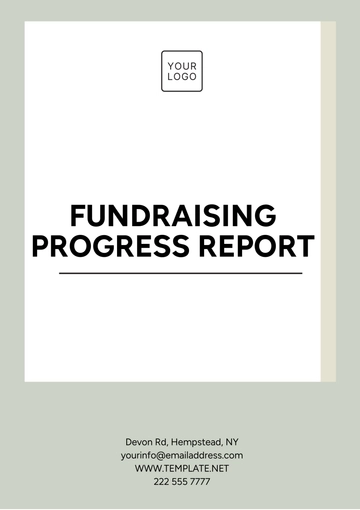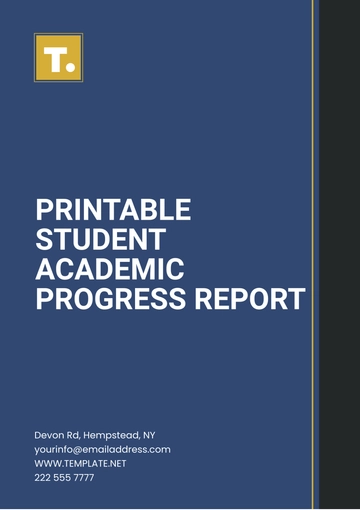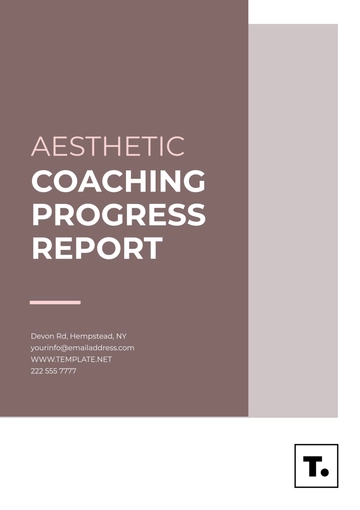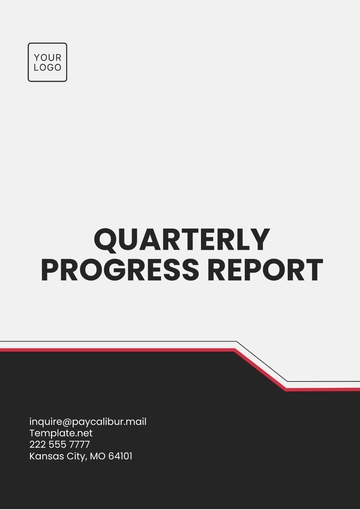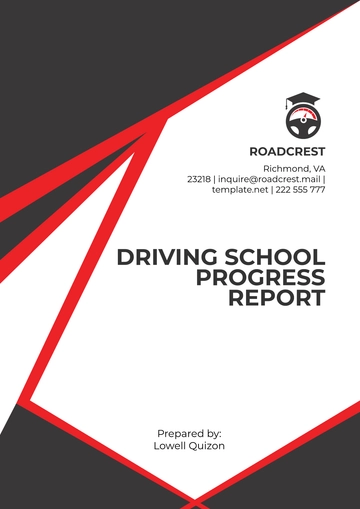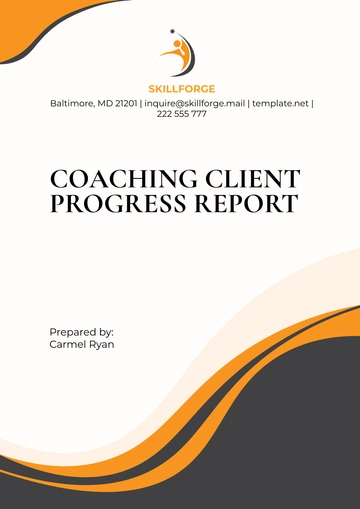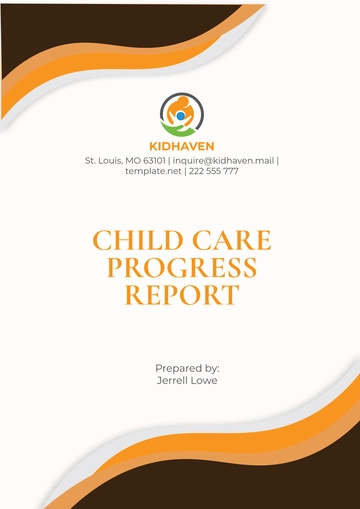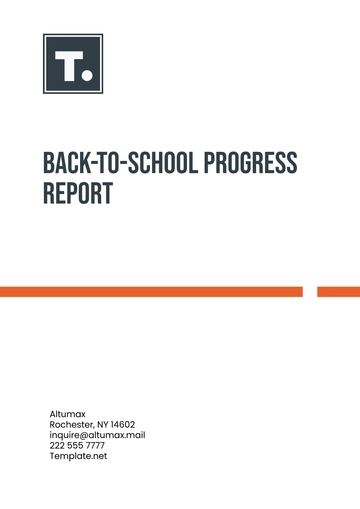Free Music School Progress Report
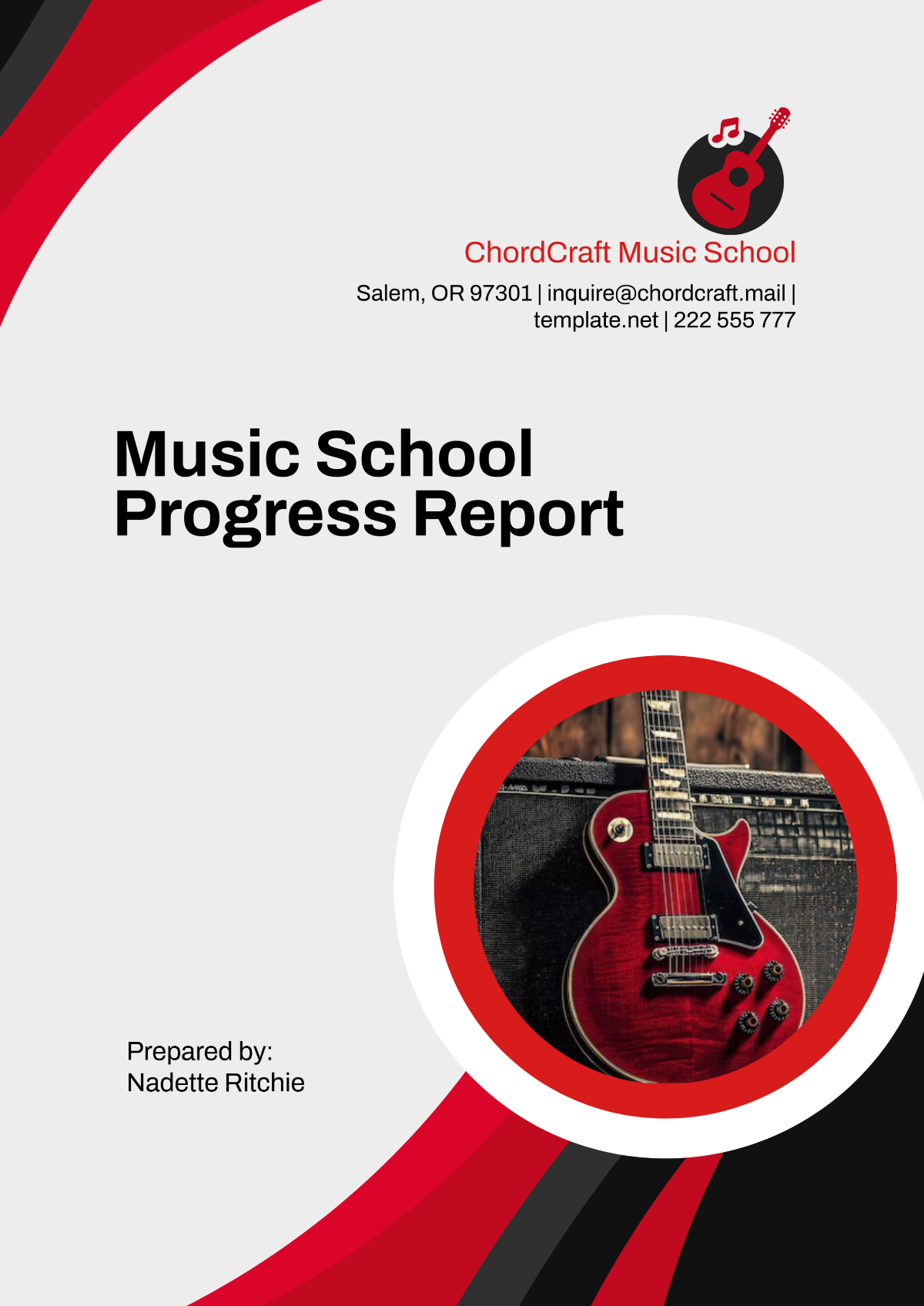
I. Student Information
[Student's Name] is an enthusiastic piano student studying under the guidance of [Your Name]. She has been attending weekly 45-minute lessons over the Fall Semester of 2050 at [Your Company Name], where she has shown remarkable dedication and a growing passion for music. [Student's Name] consistently attends her lessons and is eager to improve, developing a solid technical and musical foundation along the way.
II. Overview of Student’s Progress
A. General Observations
[Student's Name] is an engaged and motivated learner who approaches her piano studies with curiosity and commitment. She is attentive during lessons and shows steady improvement in both technical and expressive areas. Her positive attitude and willingness to practice have contributed greatly to her progress this semester.
B. Summary of Progress Made
Over the past semester, [Student's Name] has improved her finger strength, hand coordination, and musicality. She can now play with increased accuracy and rhythm consistency, particularly in simpler pieces. Her understanding of musical phrasing and dynamics is developing well, adding depth to her performances.
C. Key Achievements in This Period
[Student's Name] successfully performed "Minuet in G" by Bach at her first recital, demonstrating her growth in stage confidence. She has also advanced to her first intermediate-level piece, "Für Elise" (Intro) by Beethoven, which showcases her technical abilities. These achievements have boosted her confidence and inspired her to tackle more challenging repertoire.
III. Technical Skills
A. Technique Development
[Student's Name]’s finger strength and dexterity have notably improved, allowing her to play more challenging pieces with greater ease. Her hand positioning has become more refined, although she occasionally needs reminders to maintain relaxed wrists. This improvement in basic technique will support her continued growth in both speed and accuracy.
B. Control and Precision
[Student's Name] is able to hit notes accurately in simpler passages but sometimes struggles with more complex fingerings in advanced sections. Her coordination and timing between both hands are improving, and she is gaining control over intricate rhythms. Increased focus on precise note placement and rhythmic consistency will enhance her playing.
C. Areas for Improvement
[Student's Name] would benefit from exercises targeting finger independence to help her play more evenly. Focusing on consistent accuracy in challenging passages will further strengthen her technical foundation. Introducing slow practice routines and detailed scale work could also be beneficial to refine her control.
IV. Musical Expression and Interpretation
A. Rhythm and Tempo Control
[Student's Name] has developed a good sense of rhythm in basic patterns, though she sometimes rushes in syncopated sections. Practicing with a metronome has helped her maintain a steady tempo in simpler pieces. Consistent metronome practice will further improve her ability to manage more complex rhythms.
B. Dynamics and Articulation
She understands the basics of dynamic variation and can differentiate between soft and loud passages. [Student's Name] is beginning to explore articulation differences, such as legato and staccato, and applies these skills effectively in her pieces. Continued work on dynamics and articulation will allow her to bring more character to her performances.
C. Phrasing and Musicality
[Student's Name] is learning to shape phrases naturally, showing a budding sense of musicality in her playing. She responds well to guidance on phrasing, often adding expression and smoothness to her performances. Developing this sense further will help her connect with the music on a deeper level.
D. Expression of Emotion and Style
[Student's Name] is beginning to express emotions through her music, especially in lyrical pieces. She shows a natural affinity for softer, melodic passages and is starting to explore the character of each piece. As her technical foundation grows, she will be able to convey a broader range of styles and emotions in her playing.
E. Suggested Areas for Growth
Practicing dynamic contrasts and expressive phrasing will enhance her musical expressiveness. Focusing on rhythm consistency will support her in handling more complex pieces. Emphasizing smooth transitions between phrases will also deepen her interpretive skills.
V. Repertoire and Pieces Studied
A. List of Repertoire Worked On
This semester, [Student's Name] has focused on “Minuet in G” by Bach, “Für Elise” (Intro) by Beethoven, and “Ode to Joy.” Each piece has allowed her to develop different aspects of technique and expression. Working through these pieces has helped her build confidence and refine her interpretive skills.
B. Student’s Favorite Piece(s)
[Student's Name] particularly enjoys playing “Minuet in G,” as she feels connected to its light, graceful melody. This piece has helped her focus on dynamics and musical phrasing, which she has embraced with enthusiasm. Her fondness for this piece also motivated her recital performance, where she played it confidently.
C. Mastery of Repertoire
[Student's Name] has shown good technical and expressive skills in her current repertoire, especially in “Ode to Joy,” which she performed with clarity and precision. She is still working on sections of “Für Elise” where she encounters more challenging finger patterns. With continued practice, she will gain greater mastery of her repertoire and develop the confidence to tackle even more complex pieces.
D. Upcoming Pieces or Suggested New Repertoire
To challenge her further, introducing “Sonatina in C” by Mozart will encourage [Student's Name] to refine her dynamic control. This piece will also give her an opportunity to work on both articulation and phrasing. Including shorter, contrasting works will help keep her engaged and broaden her repertoire.
VI. Music Theory and Ear Training
A. Topics Covered
[Student's Name] has covered note values, time signatures, and basic scale patterns, which she has grasped well. She can identify major and minor scales and has begun learning simple key signatures. This foundational knowledge will support her as she learns more complex music.
B. Level of Understanding and Application
[Student's Name] understands basic rhythmic concepts and applies them effectively in her practice. She can identify notes and play simple scales with ease, though she occasionally needs help with fingerings. Her understanding of theory concepts is growing, providing her with greater confidence when approaching new pieces.
C. Sight-Reading Skills
[Student's Name] reads simpler pieces fluently, focusing on note accuracy and steady rhythm. She can recognize basic rhythms easily but still struggles with more complex time signatures. Practicing sight-reading regularly will help her read new music with greater ease.
D. Ear Training Skills
[Student's Name] has made progress in interval recognition, especially major and minor thirds, which she can now identify by ear. She is also beginning to recognize simple melodic patterns and basic harmonic structures. Continued ear training practice will sharpen her ability to identify more complex intervals and harmonies.
E. Recommendations for Continued Theory Study
Regular rhythm exercises will help [Student's Name] improve her timing in more complex pieces. Focusing on sight-reading simple pieces in different key signatures will strengthen her note-reading skills. Introducing basic chord theory will also enhance her understanding of harmonic structure.
VII. Practice Habits and Commitment
A. Practice Frequency and Consistency
[Student's Name] practices 4 to 5 times per week for 20–30 minutes, showing a good commitment to her learning. Her practice sessions are generally focused and productive, though they could benefit from more structured goals. Increasing her practice frequency and consistency will accelerate her progress.
B. Quality of Practice
[Student's Name] pays attention to note accuracy and tries to incorporate feedback from lessons, which improves her performance quality. She occasionally overlooks dynamics, so focusing more on this aspect will deepen her interpretive skills. Creating a practice schedule could help her target specific areas in each session.
C. Independence in Practice
[Student's Name] is gradually becoming more independent in her practice, often attempting to correct her mistakes before asking for help. She sets small goals for herself, such as mastering a challenging passage or playing smoothly through a piece. Continued guidance on self-correction strategies will further enhance her independence.
D. Suggestions for Improving Practice Efficiency
A structured practice plan with specific focus areas (e.g., scales, difficult passages, and dynamics) would enhance [Student's Name]’s progress. Introducing short, targeted warm-ups at the start of each session could help her focus better. Encouraging her to use a metronome for timing will also improve her rhythm and tempo consistency.
VIII. Performance Skills and Participation
A. Participation in Recitals or Performances
[Student's Name] performed “Minuet in G” at the fall recital, her first public performance. She prepared diligently for the event, which showed in her confident playing. Her experience at the recital has motivated her to continue improving her performance skills.
B. Stage Presence and Confidence
[Student's Name] demonstrated good stage presence, maintaining a positive demeanor and engaging with the audience. She appeared calm and well-prepared, which helped her play accurately. Working on stage presence will further enhance her comfort and confidence in future performances.
C. Audience Engagement and Poise
[Student's Name] was poised and focused throughout her performance, showing respect for the audience. Her ability to maintain eye contact and smile made her performance enjoyable to watch. Continued performance opportunities will help her build a strong stage presence.
D. Handling of Performance Anxiety
Although a bit nervous, [Student's Name] managed her performance anxiety well and completed her piece confidently. Preparing more frequently for small performances could help her become more comfortable on stage. Practicing in front of family members will also help her build confidence.
E. Areas for Performance Skill Development
[Student's Name] can benefit from more small group performances to reduce stage fright. Focusing on deep breathing techniques before performing could help her manage nervousness. Encouraging her to visualize success will also improve her performance confidence.
IX. Attitude and Work Ethic
A. Enthusiasm for Learning and Playing
[Student's Name] approaches each lesson with a positive attitude and a genuine enthusiasm for music. She is eager to try new pieces and is open to challenges, demonstrating a love for learning. Her passion for piano motivates her to put in consistent effort.
B. Ability to Accept Feedback and Make Adjustments
[Student's Name] listens carefully to feedback and actively works to apply it in her practice. She views constructive criticism as a way to grow and improve her playing. This openness to feedback is a great asset to her learning journey.
C. Consistency and Reliability
[Student's Name] is consistently on time for lessons and rarely misses a session, demonstrating a strong commitment to her studies. She arrives prepared, ready to work on areas discussed in previous lessons. Her reliability and dedication contribute greatly to her progress.
D. Interaction with Instructor and Peers
[Student's Name] has a positive relationship with her instructor, showing respect and a willingness to learn. She interacts well with peers in group settings and encourages others in their own musical journeys. Her positive demeanor helps create a supportive learning environment.
X. Goals for Next Period
A. Technical Goals
Focus on finger independence exercises to improve evenness and control. Work on scale patterns with consistent speed and accuracy. Build a foundation for more advanced finger dexterity.
B. Repertoire and Musical Goals
Learn a new piece monthly to continue expanding her repertoire. Explore a variety of musical styles to develop versatility. Develop a deeper understanding of musical interpretation.
C. Theory and Ear Training Goals
Strengthen sight-reading skills in different key signatures. Focus on rhythm and timing exercises to support accuracy in more complex pieces. Begin interval identification and basic harmonic analysis.
D. Performance and Confidence Goals
Perform two pieces confidently at the upcoming spring recital. Practice in front of family or small groups to build stage confidence. Work on visualization techniques to reduce performance anxiety.
E. Practice and Personal Development Goals
Establish a consistent, structured daily practice routine with set goals. Aim to practice each major focus area (scales, repertoire, theory) in every session. Develop a self-assessment checklist to enhance independent learning.
XI. Instructor Comments and Recommendations
A. Personal Feedback from the Instructor
[Student's Name] has demonstrated exceptional growth this semester, both in technical skill and musical expression. Her dedication and positive attitude make her a pleasure to teach, and she consistently responds well to new challenges. With continued focus and consistent practice, she has the potential to advance quickly.
B. Recommended Resources or Materials
“Piano Adventures Level 2” by Nancy and Randall Faber will help reinforce foundational skills. Apps like “Simply Piano” could be beneficial for additional practice outside lessons. A metronome would also be useful for improving her timing and rhythm.
C. Encouragement and Motivational Remarks
[Student's Name]’s hard work and passion for piano are truly inspiring. She has made impressive progress this semester and should be proud of her achievements. With continued effort and focus, she is well on her way to achieving her musical goals.
XII. Signatures and Acknowledgments
By signing below, each party acknowledges the progress [Student's Name] has made this semester and agrees to the outlined goals for her continued growth. This report serves as a record of her achievements and a roadmap for her future development in piano studies.
Instructor
 [Your Name]
[Your Name]
[Date]
Student
 [Student's Name]
[Student's Name]
[Date]
Music School Templates @ Template.net
- 100% Customizable, free editor
- Access 1 Million+ Templates, photo’s & graphics
- Download or share as a template
- Click and replace photos, graphics, text, backgrounds
- Resize, crop, AI write & more
- Access advanced editor
Monitor your students' growth and progress with the Music School Progress Report Template from Template.net. This editable and customizable template allows you to track performance, technique, and goals with ease. With the intuitive AI Editor Tool, you can personalize each report to suit individual needs, ensuring a professional and efficient student assessment process.
You may also like
- Sales Report
- Daily Report
- Project Report
- Business Report
- Weekly Report
- Incident Report
- Annual Report
- Report Layout
- Report Design
- Progress Report
- Marketing Report
- Company Report
- Monthly Report
- Audit Report
- Status Report
- School Report
- Reports Hr
- Management Report
- Project Status Report
- Handover Report
- Health And Safety Report
- Restaurant Report
- Construction Report
- Research Report
- Evaluation Report
- Investigation Report
- Employee Report
- Advertising Report
- Weekly Status Report
- Project Management Report
- Finance Report
- Service Report
- Technical Report
- Meeting Report
- Quarterly Report
- Inspection Report
- Medical Report
- Test Report
- Summary Report
- Inventory Report
- Valuation Report
- Operations Report
- Payroll Report
- Training Report
- Job Report
- Case Report
- Performance Report
- Board Report
- Internal Audit Report
- Student Report
- Monthly Management Report
- Small Business Report
- Accident Report
- Call Center Report
- Activity Report
- IT and Software Report
- Internship Report
- Visit Report
- Product Report
- Book Report
- Property Report
- Recruitment Report
- University Report
- Event Report
- SEO Report
- Conference Report
- Narrative Report
- Nursing Home Report
- Preschool Report
- Call Report
- Customer Report
- Employee Incident Report
- Accomplishment Report
- Social Media Report
- Work From Home Report
- Security Report
- Damage Report
- Quality Report
- Internal Report
- Nurse Report
- Real Estate Report
- Hotel Report
- Equipment Report
- Credit Report
- Field Report
- Non Profit Report
- Maintenance Report
- News Report
- Survey Report
- Executive Report
- Law Firm Report
- Advertising Agency Report
- Interior Design Report
- Travel Agency Report
- Stock Report
- Salon Report
- Bug Report
- Workplace Report
- Action Report
- Investor Report
- Cleaning Services Report
- Consulting Report
- Freelancer Report
- Site Visit Report
- Trip Report
- Classroom Observation Report
- Vehicle Report
- Final Report
- Software Report

